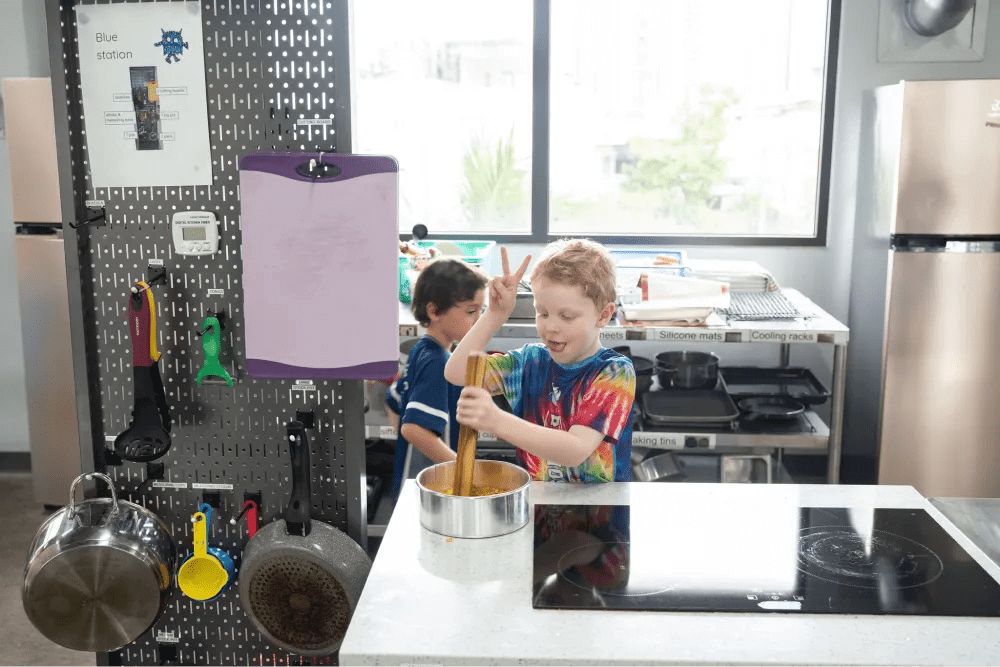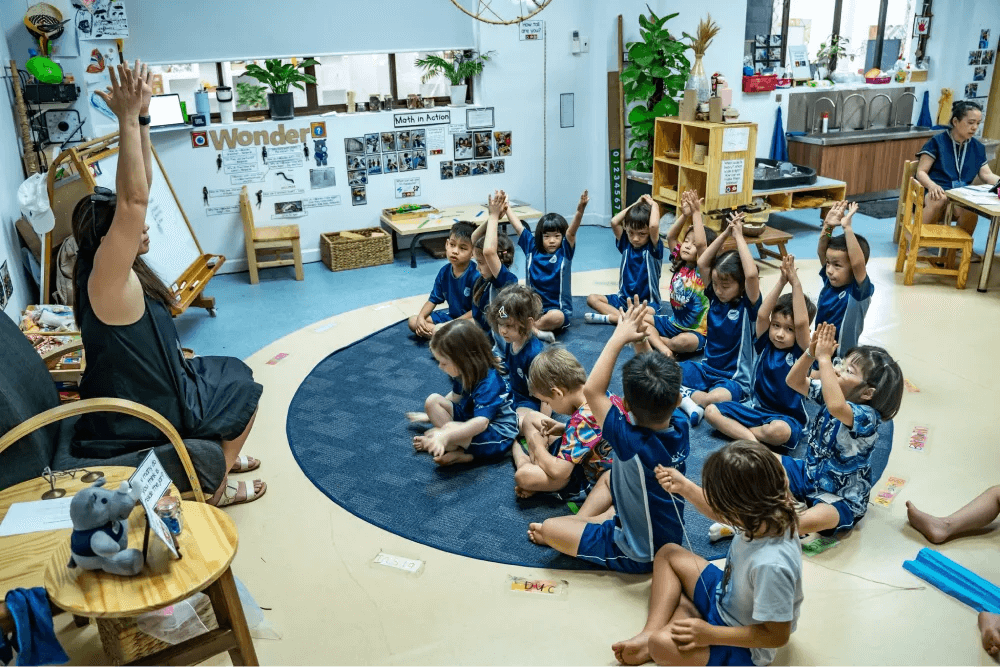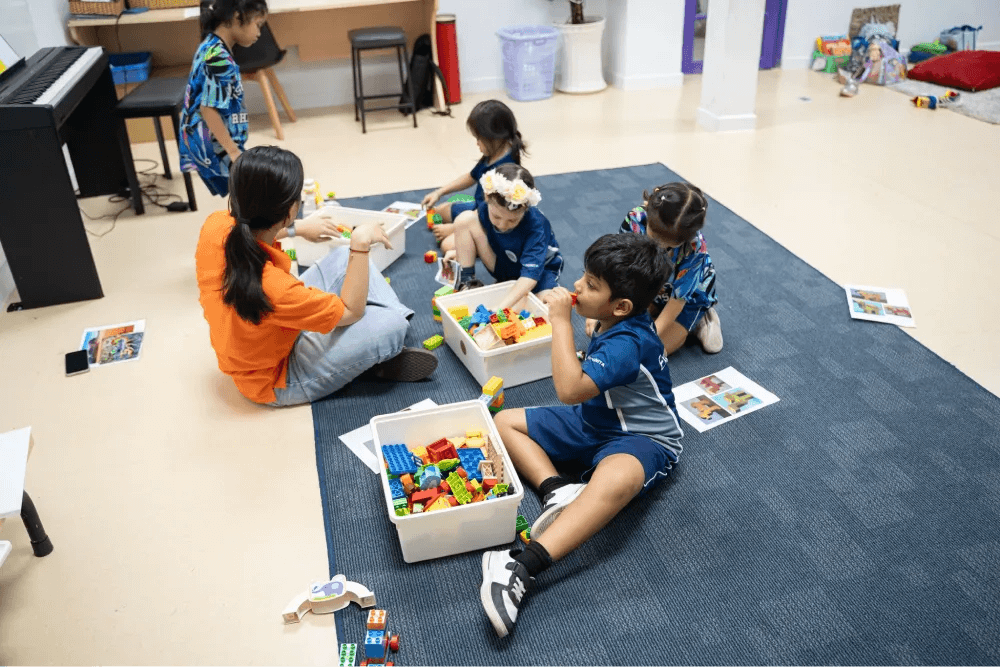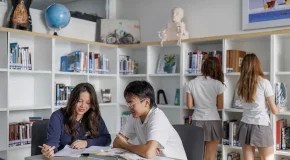The Ultimate Kindergarten Supply List for Parents
Attending schools with adequate supplies motivates students with higher self-esteem and better learning experiences. A well-prepared learning habit in the early education stage can lead to significant achievements in higher education and career pursuits. This article will discover the kindergarten supply list for parents to help their children enjoy their kindergarten journey.
What’s Included in The Kindergarten Supply List for Parents
Preparing the right supplies for kindergarten helps reduce anxiety and comfort them in a new environment. The kindergarten supply list for parents may vary depending on the school and region. Here are typical items parents should pack for their children:
- Backpack without wheels
- Lunch/snack containers
- Spill-proof water bottle
- Extra clothes
- Extra masks
- Headphones
- White copy paper
- Pencils
- Flair pen
- Hard plastic supply box
- Plastic folders (yellow, blue, green)
- Crayola crayons and markers
- Scissors
- Tubs of Play-Doh
- Glue sticks
- Dry erase marker and dry erase eraser
- Paper towel
- Ziploc bags
- Hand soap bottle
- Baby wipes
- White cardstock
- Hand sanitizer
- Composition notebook
- Indoor shoes
Tips for Parents When Preparing Their Children’s Kindergarten
Kindergarten is the time of changing children’s lifestyle rhythm when being away from home and family, leading to anxiety and fear of separation. Children may struggle to control their emotions and adjust routines to a new schedule. Parents can better support their children on this journey by following these tips:
- Help them have a good foundation for learning: Children can feel more confident if they learn how to recognize numbers and letters, cut with scissors, and know nursery rhymes before kindergarten. Home lessons give them a solid foundation for easily absorbing school lessons.
- Help them feel good about themselves: Praise children’s strengths and accomplishments to reinforce their abilities. Parents should also respect their feelings and teach them all their feelings are acceptable.
- Help them how to communicate and listen to others: Kids in kindergarten can start to connect with other peers. Hence, parents can teach them how to build a friendship and respect children who can be different from them. These experiences will foster their social skills, preparing them for primary school, where they will meet more people.
- Help them identify themselves: It would be best to help children memorize their personal information, such as their name, parents’ name, address, and phone number, by writing them on school papers and identifying their belongings.
- Support them to be healthy and strong: Kids need all necessary immunizations for school. Parents can teach them to eat well-balanced diets by eating properly first, then they will imitate the action. Besides, give them opportunities to jump, run, and play outdoors to help prepare them for the physical demands of kindergarten.
- Get them familiar with the new school ahead of time: Parents can ease anxiety and build excitement for their children by visiting their kindergarten together and checking the playground, as suggested in how to prepare your toddler for preschool.
- Teach them how to handle changes in their relationships: Children must adjust to decreased interactions with friends and caregivers when transitioning to kindergarten. In this situation, parents should collect contact information for their preschool teachers and friends and maintain a folder of their work to share with the new teacher.
- Get them prepared for kindergarten routines: To get children ready for kindergarten, parents can instruct them how to fit in the new class, which includes tasks like sharing with others, waiting for their turns, and sitting in a circle for stories. They should also adjust their bedtime before school starts.
- Instruct them how to have breakfast and lunch at school: Kindergarten requires kids to have their meals themselves in a proper manner. To become independent in school, they should be taught to use a cafeteria, carry a tray, and get silverware.
- Help them be comfortable dressing and using the school restrooms: Parents should prepare their kids with different clothes to help them feel comfortable and convenient in school areas. Their kindergarten supplies list should also include an extra set of clothes for emergencies.
- Help them feel excited and safe when going to school: On their first days to kindergarten, smile and wave goodbye to reassure them and boost their confidence. If parents still feel sad, save tears after they leave to ease your child’s worry.
- Support them at their new schools’ activities: Parents can check their children’s performance by having regular conversations with their teachers. Volunteering to assist in school activities fosters a strong relationship with the school.

Get Your Children Ready for Kindergarten Supply List For Parents with ISHCMC
The article introduced the essential kindergarten supply list for parents to facilitate their child’s adaptation to the new environment. Preparing kids for kindergarten involves equipping them with essential skills for their educational journey. ISHCMC’s Early Explorers Program, based on the IB Primary Years Programme (PYP), is designed for children joining an international kindergarten school to flourish through holistic, inquiry-based learning.
In the PYP, children engage in holistic learning experiences that integrate physical, cognitive, and socio-emotional development. At ISHCMC, teachers play the role of partners and guides, nurturing children’s interests through different projects and fostering a love for learning.
Based on the PYP framework, our approach focuses on encouraging students to determine their learning journey. Through play, they can explore the world and develop interests in certain skills and subjects. This approach promotes academic growth and builds a solid skill set to help them thrive in the school community and in future careers.

FAQs
This section addresses common questions about school supplies for kindergarten. Please kindly check to learn how to prepare effectively for kindergarten school and find the best kindergarten school supplies for your children.
What happens when parents can’t afford their child’s kindergarten supplies?
If parents can’t afford their child’s kindergarten homeschool supplies, they can try these solutions:
- Communicate with the teacher. Some schools have resources such as used kindergarten science supplies or a fund for families in need. Parents can find many items on the kindergarten supplies checklist.
- Only buy necessary items from the school supply list for kindergarten so parents can prioritize their budget without sacrificing their child’s educational needs. Parents should identify core supplies crucial for daily learning activities, such as pencils, notebooks, and crayons.
What items children should not bring to kindergarten?
Children should not bring toys, food, dangerous items, money, and jewelry to school.
- Toys: Their favorite toys, like dolls, balls, or figures, may distract them from learning and disrupt class activities.
- Food: Parents can pack a water bottle for their kids. However, candies and gum are inappropriate because they can be messy and cause class disruption.
- Money: Kindergarteners don’t know how to use money, so it’s unnecessary to allow them to bring money to school.
- Dangerous items: Knives, guns, and sharp objects pose a safety risk to children and others.
- Valuables: Children may lose their valuables during playtime and other activities in kindergarten.
How to Pack a School Bag for Your Children Before Kindergarten?
Here are some steps to pack a school bag for children before kindergarten correctly:
- Use a multi-compartment backpack to keep their stuff organized.
- Keep tiny items like pens and erasers in smaller containers to avoid losing them.
- Arrange stuff into related groups, such as art and science supplies, so your kid can find them easily.
- Place heavy items low and near your back to avoid backache.
- Place lighter items into different compartments to balance the pack load.
- Use soft items to cover fragile things. For example, the tablet can be padded with a sweater.
- Pack only what your children need to keep the bag light.
- Ensure the pack load is no more than 10% of your child’s weight.






